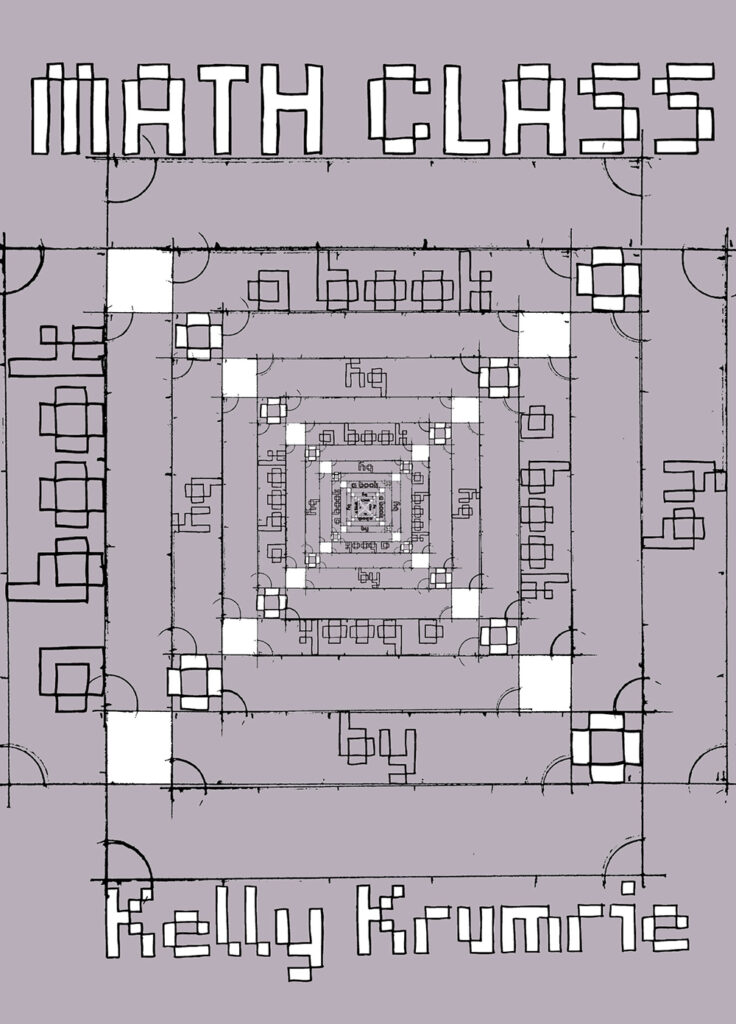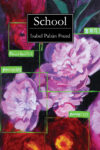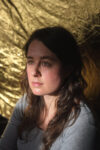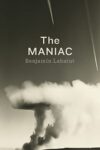
[Calamari Archive; 2022]
More than two decades ago, in an issue of the popular magazine Science, American writer David Foster Wallace published an influential essay entitled “Rhetoric and the Math Melodrama.” While the essay ostensibly functioned as a review of two novels,[1] the writer leveraged the opportunity to engage in a more profound critique of several math-related issues. After outlining mathematics’ seemingly recent surge in popularity in book, film, and theatrical form, Wallace essentially asked: What (if any) is the relationship between mathematics and narrative prose? He also wondered how densely abstract but aesthetically beautiful mathematical ideas can be rendered understandable, engaging, and perhaps inspiring to the non-mathematician.
The problem, as Wallace saw it, was that a plethora of narratives have about as much to do with mathematics as parsley has to do with a restaurant meal: essentially decorative and ultimately not very satisfying. (In this model, mathematical insight is reduced to a character writing furiously on the chalkboard or inventing fictional pseudo-mathematical ideas that don’t actually make much sense.) On the other end, there are any number—no pun intended—of beautiful mathematical concepts: transfinite numbers, the Riemann Hypothesis, the poetry inherent in Euclid’s Elements—and mathematically-framed formal literary constraints can produce remarkable results (here’s looking at you, Raymond Queneau’s Cent mille milliards de poèmes). What Wallace sketched out was, in some respects, a two-dimensional problem. But somewhere between mathematics as melodramatic caricature and migraine-inducing combinatorial, what about a third way? Mathematics as epistemological, somatic, an affective site. It is precisely in this gap that Kelly Krumrie’s poignant debut, Math Class, enters and proliferates.
Math Class operates as a series of twenty-six interlocking vignettes or speculative fictions. Think Sandra Cisneros’s House on Mango Street crossed with Sarah Gerard’s Binary Star (the work of Amina Cain and Kristin Keane also come to mind). There’s a quantum or even fractal layering between the vignettes, toggling between a micro-scale where you can practically smell the dust bunnies in the school library and a wider, occasionally oneiric, perspectivism of the characters or environs. Added to that are various mathematical sketches interspersed throughout the book: coordinate grids, matrices, topology, physics problems. It’s almost as if, at times, reading can be fused with wandering through an art gallery.
The book centers on a group of precocious teenage girls at St. Agatha’s, a Catholic school—we meet characters such as Tessa, Carolina, Ana, Lucy, and Thea—but the emotional and formal vortex of that group is Jo. Ten of the twenty-six vignettes in the book feature Jo in the title and her significance is evident from the very start with the opening piece, “Jo as a circuit.” In the character of Jo, Krumrie deftly gives the book a focal point with a character who, in a myriad of ways, collapses any distinctions between mind and body (and time and place), where thought is embodied and the body is imbued with “mechanical ghosts”:
What is this current, what is it. Its course through her body is selective and thorough. It’s electric and careful. The current is light—electricity—and its bones are her bones. Her hairs stand on end.
We learn that “Jo is a machine”—in some sense a cyborg as the result of a serious injury—as she’s being fitted for “new limbs [that] are a fleshy gray and suction onto her old limbs’ tapered ends,” but Jo herself chooses to reflect upon the nature of electricity, why she might have become a human instead of an insect, and how an engineer would calculate blood circulation for maximum efficiency. Rather than offering the reader an opening narrative trafficking in sentimentality or self-pity, Krumrie shrewdly takes the reader into the layered future-past immanence of Jo’s perspective, one in which Jo “assumes she is—or is not—a substance, or that she is—or is not—a form of energy.”
If the book opens by situating the reader within the immanence of Jo, the next vignette “Outside,” immediately pans back to a detailed description of St. Agatha’s exterior and the immediate environs. “Physical” then shifts back to the body—in this case, the physical examination the girls are about to undergo at the hands of the school nurse: “Their guessing is either to start a conversation about perceptions of their bodies or to keep themselves busy while they wait in line.” Thus, just in the first three pieces in the book, Krumrie presents reading as a kind of physics: Given three points in space, calculate a body’s (or narrative’s) true position. Whether we’re enveloped in Jo’s perspective, hovering drone-like above and around St. Agatha’s grounds, or flitting amongst idle chatter in an act of waiting, we are narrative particles on the move. This shifting of narrative grounds is a strategy deployed throughout the book.
One of the longer pieces in the book, “Jo in the Frame of Formal Opens,” orbits around Tessa describing her synesthesia—seeing shapes and objects when people speak—to Jo having visions of light transformed into a man who spoke in another frequency akin to “a transmission pouring in and out of rows of satellites; later “two women materialized” in front of Jo and were enveloped in particles followed with “a hum of insects.” The narrative continues to oscillate, and pivot into a new trajectory off of a detail. No sooner does Jo ponder the concept of circularity—“If she were a circle, her movements would be pure, infinitely symmetrical”—than she is reminded that “[n]othing in nature is perfectly circular,” and the earlier “hum of insects” springboards into the derailing of a train: “it’s not the sound of crickets she hears but the clicking of gears, or the ticking of a clock, something mechanical, metal against metal.”
The powerful dream-like strata and substrata of “Jo in the Frame of Formal Opens” is contrasted with the flatly descriptive style of “Story Problem,” the subsequent vignette, which is written like a mathematical word problem. The tension aggregates as it explains the derailing of a train. We expect with the word-problem format to find a question and solve for something, and it appears—somewhat obliquely—near the end: “The one she’d been in?” The implied answer to the question—was this the train that excised portions of two of Jo’s limbs?—ends up buried, literally and metaphorically, by the form.
Two short pieces, “Attendance” and “Hallway,” showcase Krumrie’s talent for varying registers and work almost like tracking shots. In “Attendance,” we follow Caroline collecting attendance slips à la the opening of Good Fellas’ famed “Copa Shot.” We learn Jo’s been absent for weeks since her injury—and Jo is similarly absent in a spate of the vignettes that follow. Caroline’s ambition is on display as she hopes for a letter of recommendation from Sister Clare and observes that “Today there’s a percentage of students absent that’s easy to calculate—an even portion of the student body.” “Hallway” shifts perspective downward as we follow a wheel along the hallway of the school.
“Jo considers water’s fractions” ripples out from within the narrative, a kind of parabolic crest. Jo hears voices and crickets chirping, and registers them as “an echo, a vessel for o.” And while Jo might be having a Thoreau-esque Walden moment, her poetics are more cyborg than pure ecology:
If the hands are an echo, what calls them first? Or one hand is and the other its mirrored match? Two shells, infinite waves, this place.
Slink forward. Copper wire under water. Jo the animal, Jo an extraterrestrial. Eye fiber. Mirror water. Faces lean over closed eyes.
Two other pieces titled with Jo were particularly touching for me. First, “Jo’s pencil is the extremity of a line,” which extends from Euclid’s famous definition for points and reminded me of Big Thief’s song “Not,” which gains momentum through negation and psychological after-image:
With her head on her shoulder, her arm’s the line, or the invisible thought in it, or the information from the teacher she’s supposed to record—not her neighbor’s rustling paper, not the rain sounds (though they’re there), not the sounds in the hall either. Don’t think about the windows or the desk’s material, but this material, a circle and its parts.
Secondly, “Jo is in above her exterior” has a powerful economy to it, like H.D. or William Carlos Williams at their best: “Voices on her. Voices on the frame and in it. . . . An echo lets her know she’s intact.”
A pair of vignettes bear the eponymous “Math Class”: one approximately a third of the way into the book, and the other acts as the conclusion. Both of them concern the transformation of the body. In the first “Math Class,” Tessa is taking notes on dilation and reflection symmetry and imagines the girls “as if they’re trapped in Maria’s diagram: in a math problem of their own creation,” as if a kind of calculus-as-frame-tale. In the second iteration of “Math Class,” the narrator conceives of the transfinite as indefinite replication and wonders: “How can they imagine the abstraction process that yields them? In the abstraction, what is retained as the content of the concept, and what is that from which the abstraction is made?” In a sense, this echoes the question David Foster Wallace posed more than two decades ago. The narrator’s answer, however, is equal parts poetry and mystery: “On the board I draw a fraction whose denominator is a cipher . . . The seat next to me is vacant, a pure being without measure.”
This, in turn, echoes an early segment from the vignette, “Seeing:”
What does it mean to be in the world? Is it having a body? Using it? Is it about response or engagement, leaving evidence of yourself? . . . But she meant something else—to have no location, to have no containing body at all.
And that is a key issue in the book––the epistemological and somatic act of being. Mathematical considerations, references, and revelations are abundant in the book, but readers can be equally at home in references to Giordano Bruno or Gertrude Stein. You don’t need to be a mathematician to access the narratives or be affected by the characters—anymore than you don’t need to be a composer to enjoy music. Krumrie’s absorbing debut, Math Class, is to some degree a bildungsroman, though the characters are already extraordinarily intelligent and self-aware; growth tends to take the form of addition through subtraction—the loss of limbs, eyesight, weight, certainty; and time is multi-dimensional and nonlinear, perhaps even circular or circuitous. Characters like Lucy, Tessa, Ana, and others are certainly not lacking, but Jo is the centrifugal force of the book, which may account for why her character made the strongest and deepest impression on me. Jo’s thinking may be causal, but the connections are not obvious and in the sections where Jo is absent, much like her friends, I found myself waiting for her return. When she does return to school, she faces new—and entirely practical—difficulties, like learning how to navigate space with prosthetics. Her proposed solutions, much like Krumrie’s book as a whole, are singular and distinctive: “Her locker combination is out of reach. What if she transformed into the mechanism itself?”
Mark Tardi is a writer, translator, and lecturer on faculty at the University of Łódź. He is a recipient of a 2022 Fellowship in Literary Translation from the National Endowment for the Arts and author of three books, most recently, The Circus of Trust (Dalkey Archive, 2017). Recent work and translations have appeared in Czas Kultury, LIT, Interim, Text Matters, The Scores, Denver Quarterly, The Millions, Circumference, La Piccioletta Barca, Berlin Quarterly, Notre Dame Review and in Italian translation, Rossocorpolingua. His translations of The Squatters’ Gift by Robert Rybicki (Dalkey Archive) and Faith in Strangers by Katarzyna Szaulińska (Toad Press/Veliz Books) were published in 2021.
[1] Those two novels were The Wild Numbers by Philibert Schogt, and Uncle Petros & Goldbach’s Conjecture by Aposotolos Doxiadis. Wallace didn’t have anything complimentary to say about either of them, and Doxiadis apparently neither forgave nor forgot Wallace’s largely negative review of his novel. With Ben Mazur, Doxiadis co-edited a Wallace-esque doorstopper of a collection of essays on the relationship between mathematics narrative called Circles Disturbed, and in the nearly 600 pages of essays, there is not so much as a single reference to one David Foster Wallace. Given the subject matter, it’s surprising, to say the least. Jonathan Franzen is mentioned, however.
This post may contain affiliate links.







